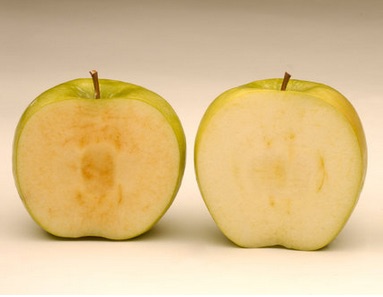![The website of Okanagan Specialty Fruits, which made the Arctic apple pictured at right, says the company “marries the best of nature with the best of science.” [okspecialtyfruits.com]](http://www.jstudentboard.com/reporter/wp-content/uploads/2015/03/JSR_March07_Apple-300x233.jpg)
The US is among the world’s biggest producers of genetically modified (GM) crops, which may have higher durability and higher aesthetic value than conventionally-grown products. This new apple, called the Arctic apple, strives to maintain apples’ nutrients while avoiding the sickly brown tint that they accumulate with age.
Yet many people oppose GM crops like these because they fear long term problems, including unanticipated health issues that can’t be predicted.
“GM technology is just too new,” said Rahul Gokhale, a sophomore at Whitney High School (WHS), to JSR.
He continued, “Relying too much on an untested product could make it difficult for us to fix things in the event of a disaster.”
Gokhale may have a point. As GM crops can suppress biodiversity and encourage homogeneity, they may be more vulnerable to disease or disaster than more heterogeneous, conventionally-grown crops.
Yet Ricardo Tolentino, another WHS sophomore, isn’t concerned.
“I honestly think that the possibility of [unforeseen health problems] happening is too low,” Tolentino told JSR.
“GM apples and crops are like hitting two birds with one stone,” he added, “you get fresher looking apples, with the same nutrients. The possibility of the stone coming back to hit me is too low to be significant.”
Tolentino is correct that genetic modification has provided both higher quantity and quality of yields. With recent advances in both machinery and modifications, problems such as world hunger and insect infestation could eventually be eradicated. Also, consumers of GM crops have not experienced any major adverse side effects.
With their low price tags, high survivability rates, and unparalleled yield rate, GM crops do have benefits. For those with concerns about their risks, however, the organic produce industry is increasingly providing alternatives to GM crops.

